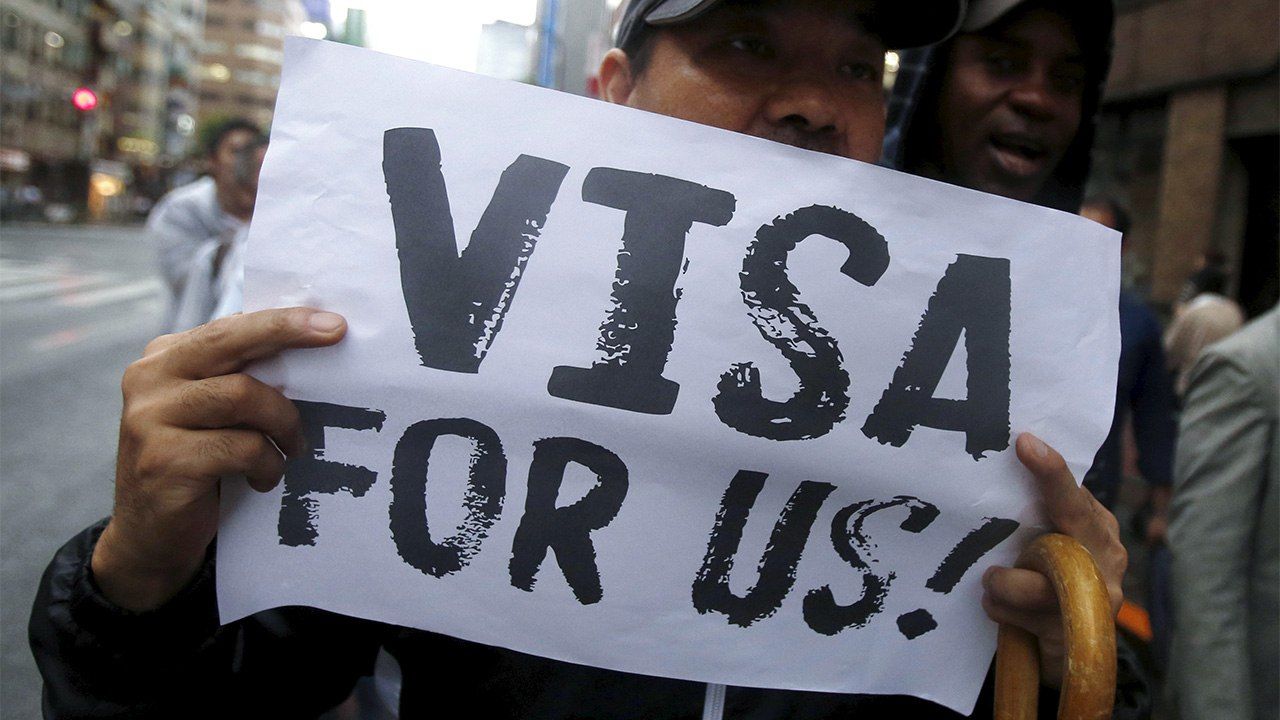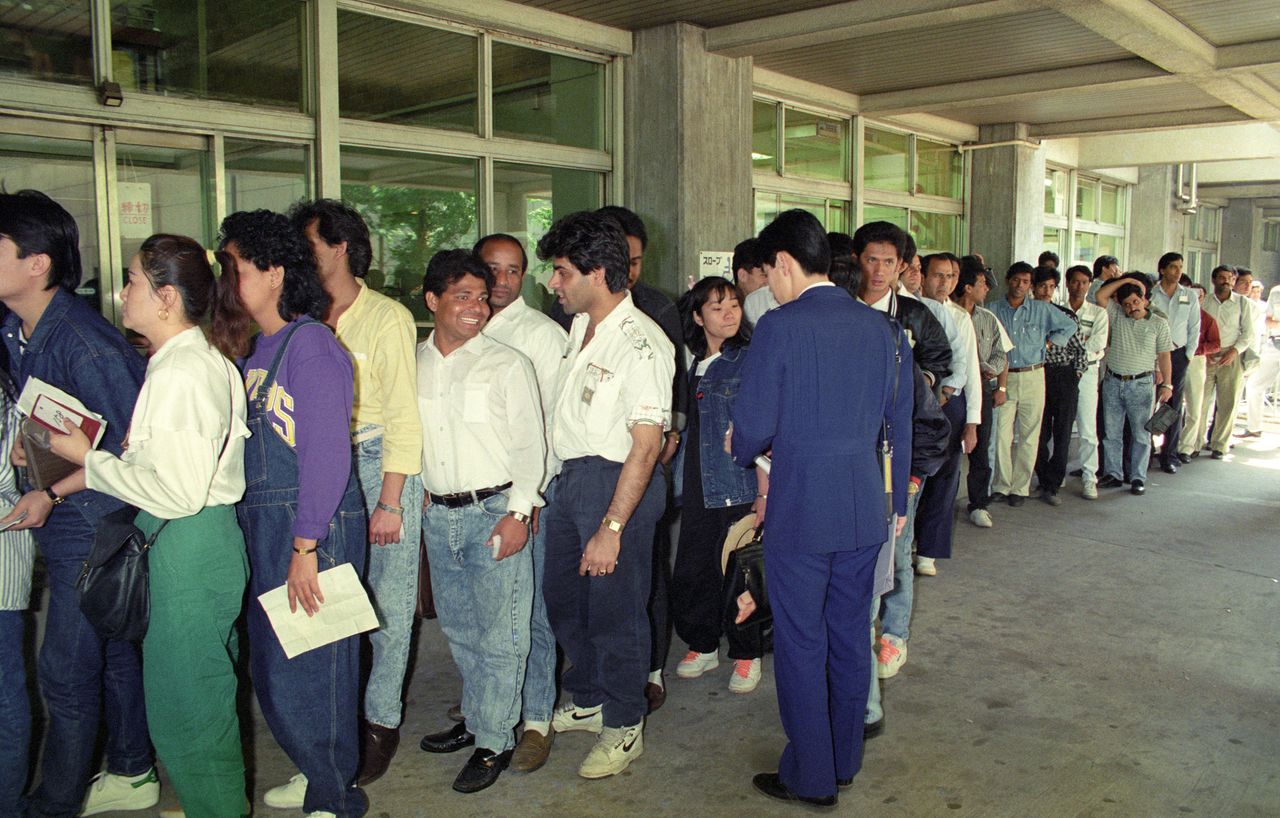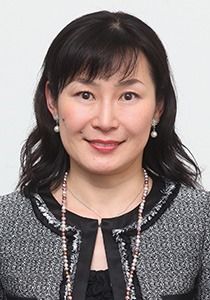
Scant Hope for Japan’s “Illegals” Under Proposed Reforms
Politics Society Work- English
- 日本語
- 简体字
- 繁體字
- Français
- Español
- العربية
- Русский
In April this year, the National Diet began deliberations of a government bill to revise the Immigration Control and Refugee Recognition Act. The proposed revisions, purportedly aimed at addressing Japan’s long-term detention of foreign nationals subject to deportation, has come under criticism for failing to address the system’s most fundamental shortcoming, a disregard for the rights of the displaced. We asked Suzuki Eriko, an expert in migration and labor policy, to share her perspective on Japan’s immigration system and those who it impacts.
Background
Japan has long been a target of international criticism for its low rate of refugee recognition and its prolonged detention of foreign nationals seeking asylum or overstaying their visas. The country’s Immigration Control and Refugee Recognition Act calls for the detention of unauthorized foreign residents while deportation procedures are underway, and there is no limit on how long they can be held. Some of the detainees confined in Japan’s regional and local immigration centers have been there for three years or more.
In June 2019, a Nigerian man died from a hunger strike protesting his detention at Ōmura Immigration Center in Nagasaki Prefecture, and the incident provided a major impetus for reform of the Immigration Control Act. But Suzuki and other advocates complain that the proposed changes not only fail to address the basic issues, but could well make things harder for asylum seekers and foreign nationals fighting deportation.
To begin with, Suzuki questions the entire premise of addressing immigration control and refugee protection under the framework of a single law. But the biggest problem, in her view, is the government’s failure to reform a system that can detain people indefinitely without due process.
“There is no requirement for any judicial examination and no limit on the duration of detention,” says Suzuki. “Even under Japan’s criminal procedure code, a court order is necessary to keep someone in custody, deprived of their personal liberty. But detainees in Japan’s immigration system are denied even that basic right, and the revisions fail to address the problem.”
The revisions now before the Diet aim to curtail prolonged detentions by three means: limiting asylum seekers’ ability to delay deportation through repeated applications for refugee status; instituting a system of “supervised release” in the place of the current “provisional release” program; and offering the possibility of “complementary protection” for asylum seekers that do not qualify for refugee status. Opposition legislators have strongly objected to the revisions, and it now seems unlikely that the ruling coalition will press forward with the bill in its present form. [On May 18, the government withdrew the bill, which seemed increasingly unlikely to make it through the session of the Diet due to end on June 16.—Ed.]
Punitive Reforms
There are no limits on the number of times one may apply for refugee status in Japan, and deportation proceedings are suspended while an application is in process. Because recognition as a refugee is so difficult to secure in Japan—on average, less than 1% of asylum seekers are granted refugee status—migrants determined not to return to their country of origin may end up applying again and again, with the result that their detention can drag on, sometimes for years.
According to Japan’s Immigration Services Agency, as of January 2021, there were more than 3,000 people defying or evading deportation orders and some 83,000 foreign nationals overstaying their visas in Japan.
Suzuki maintains that more than 90% of foreign nationals who receive deportation orders promptly comply. Of the remainder, she says, almost all have compelling reasons keeping them here.
Currently, provisional release may be granted to individuals subject to deportation, if they are deemed deserving and unlikely to flee. The decision is left to the discretion of the head of the detention center where the person is being held or the regional immigration bureau handling the case. Individuals on provisional release are prohibited from working, subject to restrictions on movement, and barred from enrolling in national health insurance. The legislation now under deliberation would replace such discretionary releases with a system under which detainees who are considered a low flight risk could be released under the supervision of authorized persons or organizations.
In Suzuki’s view, however, “the change would do nothing to mitigate the insecurity and hardship of the detainees’ situation; in fact, it’s likely to make things harder, both for them and for the people and groups that support them.”
As with provisional release, a deposit of up to ¥3 million would be required. Those released under supervision would still be prohibited from working and denied health benefits. In addition, the supervising entity would be legally obligated to submit regular reports on the applicant’s living situation, and submission of a false report would be punishable by a fine of up to ¥100,000. The ISA envisions relatives, immigration lawyers, nonprofits, and religious groups assuming a supervisory role. Suzuki calls that presumption “irresponsible.”
“Lawyers can’t act as supervisors because it conflicts with their duty to protect their clients’ confidentiality and guard their interests,” she argues. “The nonprofits and religious organizations that currently offer shelter to migrants can’t turn around and betray their trust by subjecting them to surveillance. Furthermore, people under deportation orders aren’t allowed to work, and there’s no provision in the revised law for financing their upkeep after they’re released.”
Foreign nationals who do work after being issued a deportation order can be punished by up to three years in prison. The revised legislation would also make “deportation evasion” a crime, punishable by a year in prison or a fine of up to ¥200,000.
High Bar to Protection
Japan grants asylum to only a small fraction of applicants. Its refugee recognition rate—a mere 0.4% in 2019—scarcely bears comparison with those of the industrialized countries of the West. This is unlikely to change under the revised law, which threatens those who apply more than twice with forced repatriation. The problem, says Suzuki, is that the Japanese authorities “require objective proof of persecution against the individual—evidence of torture at the hands of the government or an arrest warrant, for example. That means they won’t recognize asylum claims by Kurds who face persecution just by virtue of being Kurds.”
Under the current system, a person who does not qualify for refugee status may be granted “special permission to stay in Japan” (zaitoku for short) on humanitarian or other grounds. However, there is no standard application procedure, and the decision-making process and criteria have been criticized as opaque and inconsistent. The revised Immigration Control Act would instead establish a new residence status, “persons eligible for complementary protection,” applicable to individuals who face serious persecution in their country of origin, but for reasons other than the five specified in the Convention Relating to the Status of Refugees (race, religion, nationality, membership of a particular social group, or political opinion).
Suzuki worries that complementary protection could end up being more difficult to secure than special permission. As long as Japanese authorities require proof of persecution at the individual levels, argues Suzuki, few applicants will qualify for either refugee status or complementary protection.
In answer to concerns about the opacity and inconsistency of decisions under the special-permission program, she says the legislation before Diet would formally establish a list of factors to be taken into account when screening applications for complementary protection. Still, Suzuki doubts whether that would be sufficient to ensure transparency. She is equally disturbed by the lack of any explicit provision for interpreting and translation services or lawyer representation during oral hearings, rights guaranteed under current deportation procedures.
The Face of the Undocumented
In April this year, the advocacy organization Solidarity Network with Migrants Japan held an emergency online event protesting the proposed revisions to the Immigration Control Act. Among the unauthorized migrants who participated in the forum was a 17-year-old Ghanaian named Miracle, who has lived in Japan all her life, but still has no legal residency status. Miracle’s parents arrived in Japan on a tourist visa in 1992 and went to work at a factory in Saitama Prefecture. Miracle was born in 2003.
Around the time Miracle started elementary school, her father was detained and spent eight months in an immigration detention center. He has been on provisional release ever since. Since he is prohibited from working, the family relies on the support of benefactors for living and educational expenses. Miracle’s mother actively volunteers at the local “kids’ cafeteria” (kodomo shokudō) and nursing home, and the family has been accepted into the community. Now, Miracle says, her father has cancer and cannot afford in-patient care or surgery, since they are ineligible for national health insurance.
Miracle, now in her third year in high school, is seeking admission to a college nursing program next spring with a view to becoming a certified midwife. The family has applied for special permission to stay in Japan, but while Miracle is likely to qualify, her parents probably will not. “I can’t accept legal residence all by myself,” says Miracle. “It’s meaningless unless my family can stay here with me.”
Suzuki says that Miracle’s plight is by no means unique. “There are foreign nationals who have remained on provisional release for ten or even twenty years. Since 2015, the ban on work has been strictly enforced, so the burden falls on support organizations like nonprofits, religious groups. For families with children or sick members, the education and healthcare costs can be staggering.”
Economics of Immigration Reform
Prior to 2019, Japan’s immigration laws made no provision for the admission of unskilled foreign workers. Nonetheless, in the booming 1980s, young people from other parts of Asia poured into Japan, often on student visas, and entered the labor force. Welcomed by industries like construction, food service, and manufacturing, which were facing shortages of manual labor, they helped sustain the economy during those years.
“Under Japan’s official immigration policy, the front door was open only to professional and skilled foreign workers,” explains Suzuki. “But what the Japanese labor market really needed was people to perform ‘simple labor’ at a low cost. Accordingly, officials turned a blind eye to the foreigners entering through the back door and living and working in Japan illegally.”
As the decade progressed, however, the proliferation of these unauthorized workers and their working conditions emerged as a major social and political issue. A cabinet decision issued in 1989 reaffirmed the official ban on unskilled foreign labor, and tighter regulations were incorporated into revisions to the Immigration Control Act, which went into effect in June 1990. At the same time, the revised law established a new visa category for teijūsha, or “long-term residents,” who could work without restriction. In essence, it opened the door to immigration by foreign nationals of Japanese ancestry—primarily third-generation descendants of Japanese citizens who had settled in South America or Philippines—along with their spouses and unmarried children.
In the early 1990s, the government created another labor loophole in the form of the Technical Intern Training Program, which admits unskilled workers from abroad as paid “interns” rather than employees.
Suzuki sums it up like this: “While ostensibly closing the back door, the government opened up a side door in the form of the long-term resident visa for persons of Japanese ancestry and the Technical Intern Training Program.”

Foreign nationals line up outside the Tokyo immigration office (then in Ōtemachi) in May 1989 to secure documentation for voluntary repatriation in advance of tighter restrictions on foreign workers under the newly revised Immigration Control Law.
Enforcement of the new restrictions on unauthorized foreign workers remained fairly lenient at first, since they were still a “necessary evil” in the government’s eyes. As a result, their numbers continued to climb for another two years, reaching about 300,000 in 1992, according to Suzuki. “Once the [asset price] bubble collapsed in 1992, that number began to fall, but at the beginning of this century, there were still upwards of 250,000 foreign nationals living and working in Japan without authorization.” Suzuki calls this the era of “lenient exclusion.”
That period came to an end in December 2003, when the government adopted a plan to cut the number of “illegals” in half over a five-year period.
“One reason for that policy shift was the fact that, by then, an adequate supply of lower-skilled labor was coming in through the side door, rendering the back door unnecessary,” says Suzuki. “With stricter enforcement, the number of overstayers dropped from 220,000 in 2004 to 150,000 in 2008. But during the same period, more and more unauthorized residents were applying for and receiving special permission to stay. In the course of five years, close to 50,000 migrants secured legal status in this manner.”
In 2006, the Justice Ministry issued a set of Guidelines on Special Permission to Stay in Japan, revised in 2009. Under the guidelines, authorities are supposed to give particular consideration to applicants who are married to Japanese nationals or to “long-term residents” or who have children and have lived in Japan for a long time. In recent years, however, advocates like Suzuki have noticed a growing tendency to depart from the guidelines and deny special permission to applicants who would formerly have been deemed qualified.
Victims of the System
With the Tokyo Olympics on the horizon, immigration authorities began cracking down hard on unauthorized residents on provisional release. Until then, employment had been tolerated by tacit agreement. But around 2015, authorities began showing up at people’s homes unannounced, and a growing number of migrants were placed in detention after they were found to be working.
A substantial portion of those accused of evading deportation, says Suzuki, entered Japan and lived here legally until they were tripped up by a flawed system and a society unprepared to meet their basic needs. Prominent among these victims are “refugees” from the controversial Technical Intern Training Program.
“There are technical trainees who escaped from abusive situations [in the workplaces to which they had been assigned] and ended up overstaying their visas,” notes Suzuki. “It seems to me that we should be targeting the flawed system and the inhumane labor conditions that forced them into that position, instead of holding the victims responsible.”
The children of immigrants of Japanese descent have also suffered from the government’s short-sighted policy of admitting unskilled workers through the side door without accepting responsibility for their social integration and welfare.
“Recently, government agencies, nonprofits, and schools have been stepping up efforts to provide language instruction and other support, but back in the 1990s, most Japanese communities were completely unequipped to accommodate children from different cultural and linguistic backgrounds,” says Suzuki. “All too often, those children were bullied and ostracized in school and ended up deprived of a decent education. As young adults, they struggled to find a place for themselves and in some cases got caught up in criminal activity. They may have spent their whole life in Japan, but any criminal conviction is still grounds for deportation, even after they’ve served out their prison sentence. Do they really need to be punished twice?”
The much-ballyhooed immigration reforms that came into effect in April 2019 established a new “specified skills” visa that officially opens the front door to lower-skilled foreign workers in designated industries. But a year later, much remains unclear about the program’s implementation, including the provision of language instruction and other support services and the status of the controversial TITP, which continues to operate.
In 2020, in response to the COVID-19 pandemic, the government temporarily loosened some of the restrictions on TITP “trainees,” as by allowing them to find new positions if laid off by a pandemic-hit business and extending their period of stay. At the same time, the pandemic has strained the financial resources of those who provide support for migrants prohibited from working in Japan.
“This may not be a problem that strikes close to home for the majority of Japanese citizens, but I think we need to heed the plight of our fellow human beings and listen to them when they explain the circumstances that have left them stranded this way, under orders to leave but unable to do so. After all, their plight is partly the fault of Japanese society, which for so long refused to admit foreign workers through front-door channels, and which continues to deny asylum to people facing persecution in their country of origin.”
(Originally published in Japanese, based on an interview by Itakura Kimie of Nippon.com. Banner photo: Asylum seekers demonstrating in Tokyo in September 2015. © Reuters.)
foreign workers immigration foreign labor Immigration Control and Refugee Recognition Act TITP
